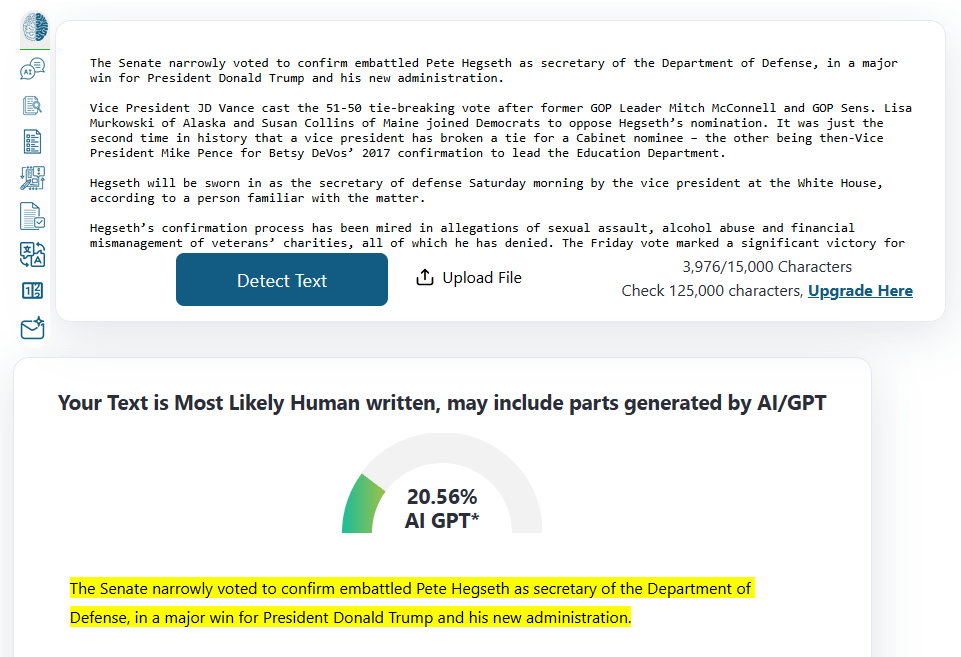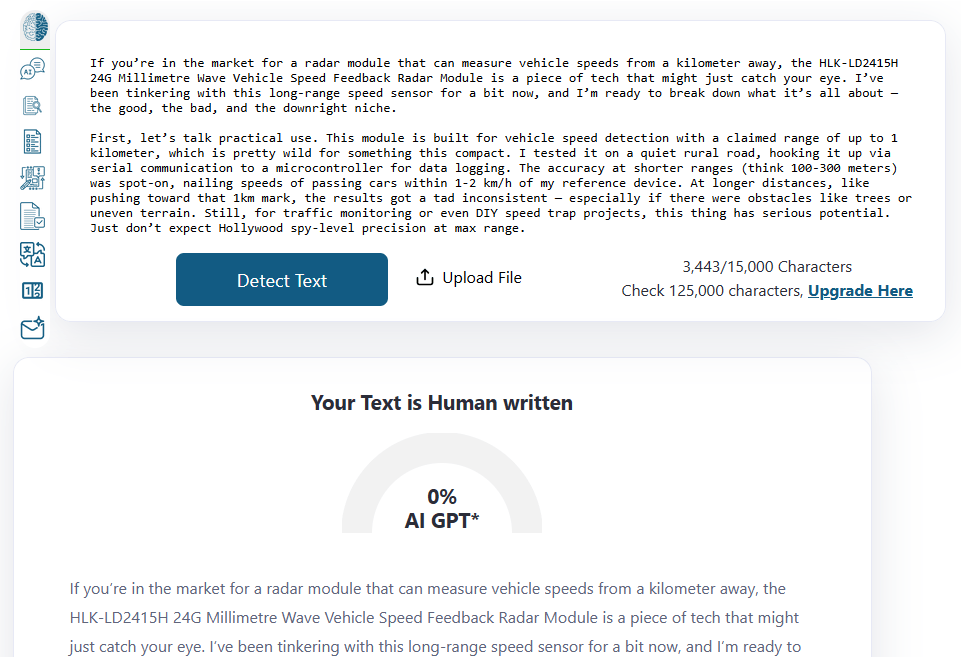
Recently, Anthropic quietly shut down Claude Explains, an experimental AI-powered blog project in which articles were written by the Claude model and lightly edited by humans. An official reason for its closure was never given. Most likely, the project simply failed to generate interest. The content was too…correct. It was too sterile. It read less like a sentient AI sharing insights and more like a PR department checking boxes.
This naturally raises a serious question: Is it possible today to run a blog where all the articles are written solely by AI, with no copywriters, editors, or human intervention?
The answer is yes. Not only is it possible, it’s already happening.
Flagged by a model. Written by whom?
Here’s a screenshot from ZeroGPT, one of the more popular AI content detectors. It flagged a random CNN article as having a 20.56% probability of being written by an AI GPT. One would assume that such text was written by a journalist and reviewed by editors.

However, the detector doesn’t offer definitive proof. It provides a probabilistic judgment, likely based on the templated structure commonly found in news writing or the partial use of large language models (LLMs) in editorial workflows. Several major outlets, such as CNET, BuzzFeed, and G/O Media, have admitted to using AI to draft or produce articles. CNN hasn’t officially confirmed such practices, but that doesn’t mean they aren’t happening – they just prefer not to advertise them.
Now, let’s compare it to another example: a review of the HLK-LD2415H Chinese radar module, generated using the CyberSEO Pro plugin with the xAI Grok-3 model. That review was created using the same prompt described in our article. This prompt not only defines the content format (structure, tone, “verdict” block, and bullet points), but also guides the model to emulate the tone of real-world tech blogs. See the screenshot below:

The content was recognized as being written entirely by humans. This wasn’t a literary story, where metaphors could mask automation, but rather a dry, technical topic: speed detection, serial interfaces, and range variability. In other words, it was the perfect bait for formulaic AI output. Yet, the result reads naturally and feels human. It even fools automated detectors.
It’s all about implementation
Modern language models such as Claude, GPT-4o, and Grok-3 can generate compelling written content. They don’t produce generic or flat writing; rather, they write with tone, character, and structure. However, they only achieve this when set up correctly with a well-structured prompt and clear objective. For instance, the objective shouldn’t be “just write an article about everything.” The format should also fit the genre, whether it be a story, product review, feature, or list.
This is precisely why most AI blog attempts fail. People expect the model to generate content comparable to that of Wired or The Verge by default. However, the model is merely a tool. It produces exactly what you input.
Why their attempt fell flat
Anthropic builds excellent models. Its latest flagship model, Claude 4 Opus, launched in March 2025 and is one of the most advanced large language models (LLMs) available. It boasts a 200,000-token context window, enhanced memory, and cutting-edge performance on complex tasks. In fact, it achieved a 72.5% success rate on SWE-bench coding benchmarks. It is considered one of the safest and most intellectually balanced models on the market. Users of CyberSEO Pro, RSS Retriever, and AI Autoblogger can access it via Anthropic’s official API or the OpenRouter platform.
However, the launch of their own blog felt like a half-hearted demo — more of a showcase than a product. There is no clear content pipeline. There was no distinct editorial voice. There was no long-term structure. Ultimately, there were no readers.
The AI wasn’t the problem. It just wasn’t given a real chance to shine.
When the reader can’t tell anymore
If a CNN article can be flagged as “likely AI-generated” while an actual AI-generated article is deemed 100% human, it’s clear that the question today is not whether to use AI for writing but how to use it properly.
With the right tools, and the right strategy, AI can do more than just replace the copywriter. It begins to sound better than many human authors — quietly, efficiently, and clearly.
If you’re reading this, perhaps some of Claude Explains’ readers would have stayed with them if the writing had felt more alive.
